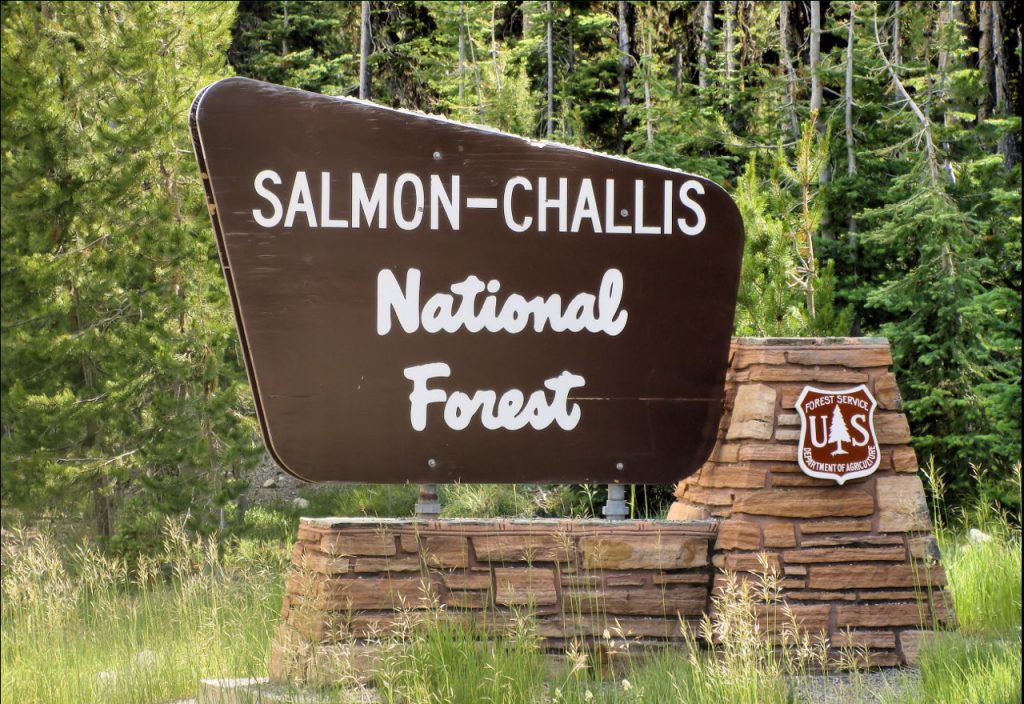Salmon-Challis National Forest reports 1 new fire

SALMON, Idaho (KIFI) - The Salmon-Challis National Forest has had one new fire in the last week.
To date, there have been 49 wildfires reported on the Salmon-Challis National Forest. 42 of those reported fires are out.
Timber Fire (October 5): The ½ acre fire burning in timber is out. The fire was located approximately 12 miles southwest of Leadore on the Leadore Ranger District.
Patterson Fire (September 29): The lightning fire is estimated at 40 acres. The fire is located approximately 13 miles southeast of May on the Challis-Yankee Fork Ranger District. The fire is burning in subalpine and Douglas fir. The fire is under a combination of a point protection and confine and contain strategies. This strategy focuses operations on protecting valued resources such as structures, natural resources, cultural resources, and other property. Risk to responders and public safety is the number priority for the Patterson Fire.
Horse Fire (September 8): The fire, located approximately 5½ miles northwest of Corn Creek on the North Fork Ranger District in the Frank Church River of No Return Wilderness is estimated at 397 acres. The fire is burning in lodgepole, fir, and snags. The fire is being managed under a point protection strategy. Fire activity is minimal, the fire is smoldering in the interior of the perimeter. The fire can be found on InciWeb at https://inciweb.nwcg.gov/incident/8416/.
Owl Fire (September 8): The fire, located approximately 20 miles west of North Fork on the North Fork Ranger District, is 747 acres. The fire, burning in grass, brush, Douglas fir, and snags is 100% contained. The fire is on InciWeb at https://inciweb.nwcg.gov/incident/8416/.
Norton (August 1): The lightning fire is located approximately seven miles northwest of Lower Loon Creek on the Middle Fork Ranger District in the Frank Church River of No Return Wilderness. The 9,069 acre fire burning in subalpine fir, Douglas fir, sagebrush, and grass is located in steep rugged terrain. Fire activity is minimal, the fire is smoldering. The fire is under a point protection strategy, fire managers are utilizing air resources to determine action points and assess values in the vicinity. Fire managers continue to assess the fire using aircraft. The fire can be found on InciWeb at https://inciweb.nwcg.gov/incident/8308/.
Moose (July 17): The fire is being updated separately and can be found on InciWeb at https://inciweb.nwcg.gov/incident/8249/.
Woodtick (July 14): The lightning fire started as two separate fires approximately six (6) miles west, northwest of Meyers Cove on the Middle Fork Ranger District in the Frank Church River of No Return Wilderness. The 9,598 acre fire burning in timber, grass, and brush is located in steep rugged terrain. Fire activity is minimal, the fire is smoldering. The fire is under a point protection and confine and contain strategies with risk to responders and public safety being the top priority. The fire can be found on InciWeb at https://inciweb.nwcg.gov/incident/8253/.
Wolf Fang Fire (July 13): The lightning fire is located approximately four miles northeast of the confluence of Big Creek and the Middle Fork of the Salmon River in the Frank Church River of No Return Wilderness on the North Fork Ranger District. The 2,082 acre fire burning in spruce and fir is located in steep, rugged terrain. Fire activity is minimal, the fire is smoldering. Risk to responders and public safety are the top priorities for the Wolf Fang Fire. Due to the inaccessibility of the terrain and snag hazards a remote camera and aviation are assessing the fire daily. The fire can be found on InciWeb at https://inciweb.nwcg.gov/incident/8273/.
The forest is asking visitors to be aware of the MODERATE fire danger for the Salmon-Challis National Forest. One Less Spark Means One Less Wildfire. Never leave a campfire unattended. Always add water, stir it, and make sure all embers are out. If it’s too hot to touch, it’s too hot to leave.
Nationally, there are 12 uncontained large fires being managed under a full suppression strategy and 69 large fires managed under a strategy other than full suppression.






